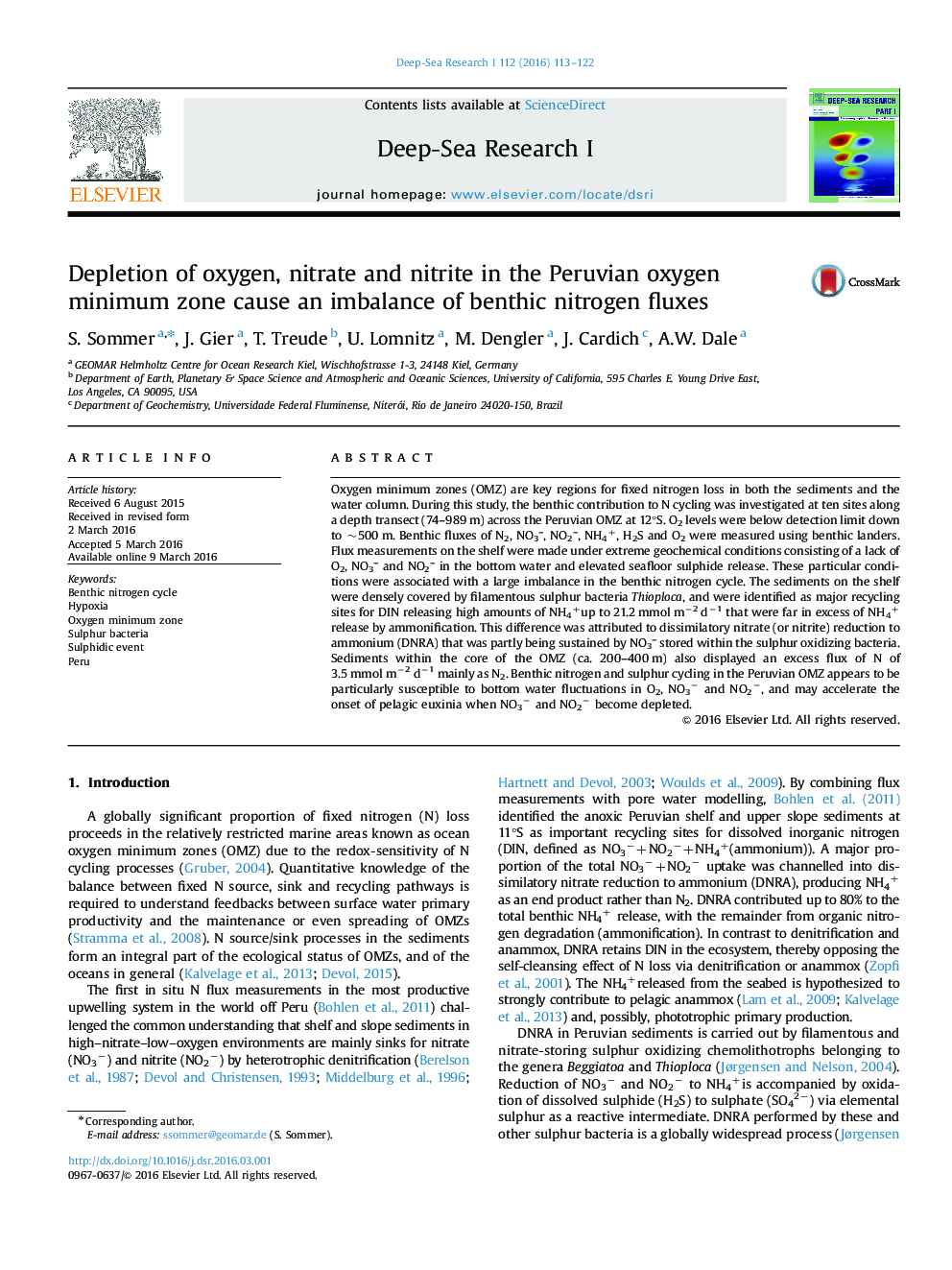| کد مقاله | کد نشریه | سال انتشار | مقاله انگلیسی | نسخه تمام متن |
|---|---|---|---|---|
| 4534396 | 1626318 | 2016 | 10 صفحه PDF | دانلود رایگان |
• Sulphidic event on the shelf resulted in a temporal imbalance of the benthic N cycle.
• Bacterial NOx storage is a major source of oxidative power during euxinia.
• Peruvian shelf and upper slope sediments are strong recycling sites of fixed N.
Oxygen minimum zones (OMZ) are key regions for fixed nitrogen loss in both the sediments and the water column. During this study, the benthic contribution to N cycling was investigated at ten sites along a depth transect (74–989 m) across the Peruvian OMZ at 12°S. O2 levels were below detection limit down to ~500 m. Benthic fluxes of N2, NO3–, NO2–, NH4+, H2S and O2 were measured using benthic landers. Flux measurements on the shelf were made under extreme geochemical conditions consisting of a lack of O2, NO3– and NO2– in the bottom water and elevated seafloor sulphide release. These particular conditions were associated with a large imbalance in the benthic nitrogen cycle. The sediments on the shelf were densely covered by filamentous sulphur bacteria Thioploca, and were identified as major recycling sites for DIN releasing high amounts of NH4+up to 21.2 mmol m−2 d−1 that were far in excess of NH4+ release by ammonification. This difference was attributed to dissimilatory nitrate (or nitrite) reduction to ammonium (DNRA) that was partly being sustained by NO3– stored within the sulphur oxidizing bacteria. Sediments within the core of the OMZ (ca. 200–400 m) also displayed an excess flux of N of 3.5 mmol m−2 d−1 mainly as N2. Benthic nitrogen and sulphur cycling in the Peruvian OMZ appears to be particularly susceptible to bottom water fluctuations in O2, NO3− and NO2−, and may accelerate the onset of pelagic euxinia when NO3− and NO2− become depleted.
Journal: Deep Sea Research Part I: Oceanographic Research Papers - Volume 112, June 2016, Pages 113–122
